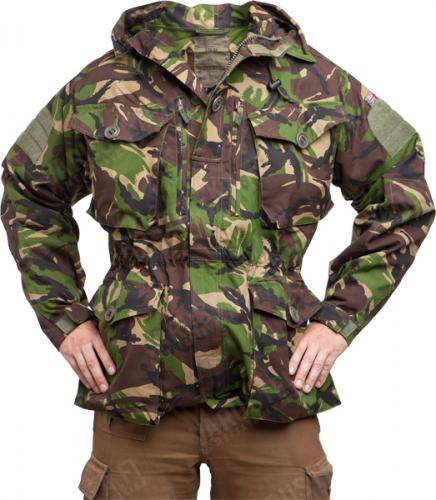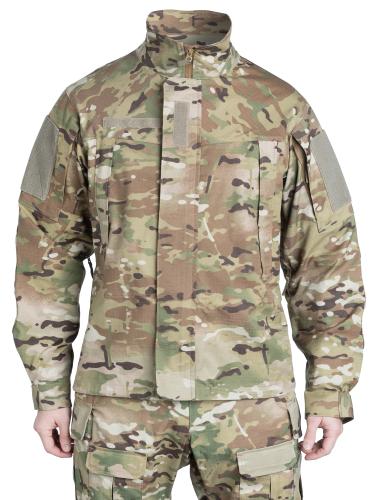
From Combat to Collectibles: The Growing Trend of Military Surplus Camouflage
From Combat to Collectibles: The Growing Trend of Military Surplus Camouflage
Originally designed for military use, military camouflages aimed to blend soldiers into their surroundings and protect them from enemy sight. Today, military surplus camouflage is gaining popularity among civilians. This content piece explores the history of military camouflage, the reasons behind its growing trend among civilians, popular patterns you might encounter, and contemporary uses of military surplus gear. Whether you're interested in adopting a stealthy look or just curious about why this trend is booming—read on!
Then and Now: History of Military Camouflage Use
Early uses of military camouflage date back to the 19th century when armies figured out that standing in bright uniforms and getting shot to pieces is kinda stupid and began experimenting with ways to blend into their surroundings. The French military was among the first to adopt camo techniques during World War I, using disruptive patterns on uniforms and equipment.
During World War II, camouflage evolved significantly, as various nations developed unique patterns suited for different environments. Most famous WWII patterns are probably the German Pea Dot and Oak Leaf. However, USA also started testing camo patterns during that war. They used olive drab uniforms in Europe but came up with the Frog Skin camo pattern for jungle warfare. It was also used in some later wars but it isn’t as well known jungle camo as the Tiger Stripe that the US special forces used in Vietnam. Who originally developed this camo pattern is, however, contested.
Technological advancements also shaped modern camouflage techniques. Innovations such as camo netting helped conceal larger equipment from aerial surveillance during key conflicts. And ghillie suits used by snipers employed 3D elements that further helped conceal the soldier from the enemy. Another leap was the development of NIR-compliant fabrics that mimic radiation levels surrounding the wearer, making them less visible to infrared sight technology, such as night vision goggles.
Over recent decades, interest in military surplus gear has transitioned from strictly military use to civilian markets also. This shift can be attributed partly to its practicality in hunting but also due to its historical significance and unique aesthetic appeal.
Today, even items from less commonly known forces like Turkish military surplus are sought after by collectors. The weirder the better!
Military Surplus Camouflage: Why Is It a Growing Trend?
Practicality
Camouflage patterns that hide you from the enemy can also hide you from animals. Some animals don’t see colors like we do and some have very poor eyesight but all of them detect motion. And camo makes it more difficult for them to spot you from the terrain. That is why camo clothing is nowadays favored by many hunters. There are civilian camo patterns available but many hunters trust old military camo gear because it does the job well, lasts long, and doesn’t ruin your budget.
Milsurp camo is also popular among military reservists, airsoft and paintball folks, preppers, survivalists, and nature photographers, some of them wanting to hide from animals, some from animals. The reservists have a bit more particular needs, since they need gear in colors acceptable wherever they may train
Durability
Military surplus camouflage gear is known for its high-quality materials and workmanship. Military clothing featuring camouflage, like field jackets and field shirts, is designed to withstand harsh conditions. These items are built to last, often outlasting commercial outdoor gear. The longevity of military surplus gear makes it a practical choice for everyday use.
Affordability
Military surplus camouflage gear offers a cost-effective alternative to commercial outdoor gear. These items are often available at a fraction of the cost compared to new retail options, which makes them an attractive choice for budget-conscious consumers looking for value without sacrificing quality.
Historical and Collectible Value
Military surplus camouflage clothing and other gear hold a special appeal for history enthusiasts and collectors who seek out rare patterns or those used by specific units. More common patterns like DPM, Flecktarn, and MTP as well as less frequently encountered ones like the Finnish M62, Swiss Alpenflage, and the NVA Strichtarn all have their fans.
Understanding the value of different patterns involves knowing their historical context and rarity. This makes collecting military surplus both an educational experience and a way to preserve important aspects of military heritage.
Environmental Considerations
Repurposing military surplus reduces waste by giving second-hand gear a new life. This not only conserves resources but also minimizes the environmental impact associated with manufacturing new products. By extending the life cycle of durable military gear, we can also reduce the amount of waste that ends up in landfills.
This sustainable practice supports a more circular economy, where materials are reused and recycled rather than discarded, contributing to a healthier planet.
Popular Types of Camouflage Patterns
Woodland Camouflage

Woodland camouflage is an umbrella term for numerous camo patterns designed for forested terrain. These patterns work well in different kinds of forested areas where foliage provides natural cover. Different countries have their own woodland patterns, such as the British DPM and Finnish M05 woodland camo. The term got its name from a US camo pattern that was simply named Woodland. Originating in the U.S. military during the 1980s, it features a mix of greens, browns, blacks, and tans.
Desert Camouflage

Desert camouflage was designed for arid environments with sandy terrain. Different countries have their own varieties, such as the Desert DPM and the Finnish M04. In these patterns, tan and brown hues blend seamlessly into desert landscapes. Some desert camos also add green in the mix. Historically used by forces operating in Middle Eastern regions, In addition to military use, it is also efficient for hunting in similar terrain.
Snow Camouflage

Snow camouflage is designed specifically for winter environments with snowy landscapes. Its white and grey patterns blend seamlessly into snowy and icy terrains. Different countries have their own snow camo patterns. For example, Finland has M05 Snow Camo. Originally used by military forces operating in snowy regions, it's also highly effective for wintertime hunting and nature photography. If you spend a lot of time in snowy conditions, snow camouflage gear can help you blend. Some of the stuff is even insulated and keeps you warm as well.
Urban Camouflage
These are camo patterns designed to be used in built-up environments. They primarily employ patterns in gray, black, and white but some also use other colors, such as blue. Militarywise, it is a niche camo that has primarily seen just test use. It has been a bit more commonly used by some paramilitary forces and police units. In the civilian world, it has been seen a lot, even in fast fashion chains.
"Universal" Camouflage

These are camo patterns designed to be used across a wide range of terrains and climates. Developed to adapt to various environments from deserts to forests. Some of them have been less than effective like the UCP (Universal Camo Pattern). While others have become very popular, such as MultiCam, which has been adopted by multiple military forces worldwide due to its effectiveness.
Digital Camouflage

These are pixelated camo patterns created using computer algorithms. Designed for a multitude of environments, digital camouflage represents modern advancements in concealment technology with pixelated designs that break up outlines more effectively than traditional patterns. The science behind digital camo lies in its ability to confuse visual perception, making it harder for observers to detect movement or shapes. The first digital camo pattern taken into use was CADPAT, Canadian pattern. Most famous is probably MARPAT used by the US Marines. Some digital patterns are very effective, others are more fit for catwalks.
Practical Uses For Military Surplus Camouflage
Outdoor Activities
As previously mentioned, military surplus camouflage gear’s durability and practicality make it ideal for outdoor enthusiasts seeking reliable stuff that can withstand the elements. The effective concealment and versatility of different camo patterns allow hunters, campers, and hikers to blend seamlessly into a wide range of natural environments, whether it's for hunting games in the forest, setting up camp in the mountains, or hiking through rugged terrain.
Survival and Prepping
Military surplus camouflage is a highly sought-after resource for survivalists and those preparing for the zombie apocalypse or some other end-of-the-world-type scenario. Its effectiveness in blending into the environment and providing cover makes it an essential component in survival kits.
Preppers rely on military surplus camouflage for various purposes, including utility pouches, magazine pouches, and accessory pouches. Its versatility and durability make it a valuable asset in any emergency preparedness plan.
Recreational Use (Airsoft and Paintball)
Many participants in airsoft and magfed paintball games opt for military surplus camouflage to add an extra layer of authenticity and immersion to their gaming experience. A variety of camouflage gear options are available, including camo uniforms and even ghillie suits, sniper scarves, and combat vests, which can give players a strategic advantage and enhance overall gameplay dynamics.
Fashion and Personal Style
Military surplus camouflage has also found its way into streetwear and fashion trends. Camouflage t-shirts, pants, and other items have been more or less popular in contemporary fashion for a few decades. That’s why you can buy camo clothing from regular stores these days. However, why buy the camo clothes from fast fashion stores, because they cost a lot more but come with a self-destruct mechanism, which means that they will disintegrate in less than a year. Mixing military surplus camo with neutral tones creates a balanced look that adds a rugged edge to everyday outfits.
Final Thoughts
Military surplus camouflage is an ideal choice for various uses, ranging from outdoor activities and fashion to survival and tactical games. Its historical and collectible value, coupled with environmental benefits, further enhances its appeal. By understanding and utilizing military surplus camouflage, you can enjoy a versatile and reliable resource that stands the test of time.
This article has been created in collaboration with Skyn... generative AI to get some of that sweet, sweet search engine optimization juice. We have used it to gather data and relevant SEO keywords/phrases. We have then edited the crap out of it to remove all the weird and unusual suggestions from our robot overlords. Thank you for understanding us wanting to prosper in today's brutal SEO game.